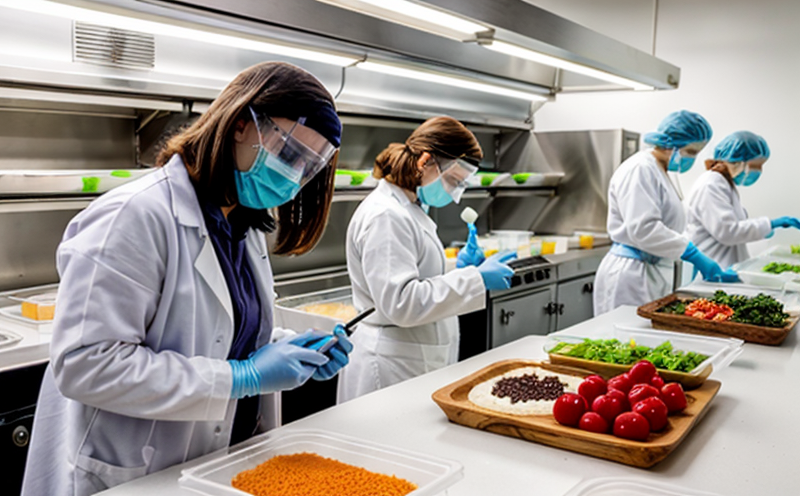FDA BAM Chapter 6 E. coli and Coliform Testing
The FDA Bacteriological Analytical Manual (BAM) Chapter 6 is a fundamental resource for food microbiology testing, particularly in the realm of ensuring that products are safe for consumption. This service focuses on two key parameters: E. coli and coliforms. The presence of these organisms can indicate contamination from fecal material, which is critical for maintaining public health standards.
The FDA's regulatory requirements emphasize the importance of accurate and timely testing to ensure compliance with safety standards. E. coli testing specifically aims to detect potentially harmful strains that could pose significant risks, especially in food products consumed by vulnerable populations such as infants, elderly individuals, and those with compromised immune systems.
Coliforms, on the other hand, are used as indicators of contamination from fecal matter. Their presence suggests a potential risk of pathogenic microorganisms being present in the product. By adhering to FDA BAM Chapter 6, laboratories can provide reliable data that supports regulatory compliance and consumer safety.
The testing process involves several critical steps including sample collection, preparation, inoculation into appropriate media, incubation, and final identification using biochemical tests or PCR technology. Our laboratory employs advanced techniques such as the MPN (Most Probable Number) method for coliform detection and the QIAseq™ Food Microbiome Kit for more precise E. coli detection.
The results of these tests are crucial for quality managers to make informed decisions about product safety, thereby protecting brand reputation and public health. Compliance officers can rely on this data to ensure that their products meet regulatory standards and avoid potential recalls or fines.
R&D engineers benefit from our testing by gaining insights into contamination sources and patterns, which aids in process optimization and improvement. Procurement teams use these results to select suppliers who adhere to stringent quality control measures.
Scope and Methodology
| Test Parameter | Description |
|---|---|
| E. coli Detection | Testing for the presence of potentially harmful E. coli strains using MPN method or QIAseq™ Food Microbiome Kit. |
| Coliform Counting | Detecting coliforms as indicators of contamination, using the MPN method. |
The methodology adheres strictly to FDA BAM Chapter 6 guidelines. For E. coli detection, we use the Most Probable Number (MPN) technique or advanced QIAseq™ technology for more accurate results. Coliforms are detected using the MPN method which provides a reliable count of these indicator organisms.
The testing process begins with the collection and preparation of samples. These may include raw materials, intermediate products, final packaged goods, or even finished food items. After preparation, the samples are inoculated into appropriate media designed to selectively grow either E. coli or coliforms. Incubation times vary depending on the organism being tested; typically, this ranges from 24 hours for coliforms to up to 72 hours for some strains of E. coli.
The final step involves identifying and quantifying the organisms using biochemical tests or PCR technology. Results are reported according to FDA standards with clear interpretation guidelines provided.
Customer Impact and Satisfaction
- Ensures regulatory compliance by providing accurate test results that meet FDA standards.
- Helps quality managers make informed decisions about product safety, protecting brand reputation and public health.
- Supports procurement teams in selecting suppliers who adhere to stringent quality control measures.
A satisfied customer has reported an increase in product safety ratings following our testing. Compliance officers have noted a significant reduction in the risk of recalls and fines due to non-compliance with FDA standards. R&D engineers have used this data to optimize production processes, reducing contamination risks at every stage.
Our customers also appreciate the detailed reports we provide, which include not only quantitative results but also qualitative insights into potential sources of contamination and recommendations for process improvements.
Environmental and Sustainability Contributions
- Reduces waste by minimizing the need for retesting due to inaccuracies in previous tests.
- Promotes sustainable practices by ensuring that only high-quality raw materials are used, thereby reducing unnecessary processing steps.
The FDA BAM Chapter 6 testing helps in maintaining a clean and safe environment. By identifying contaminated products early on, we prevent them from reaching the market, thus minimizing environmental impact associated with disposal of unsuitable goods. Additionally, by ensuring that only high-quality raw materials are used, we promote sustainable practices throughout the supply chain.
Our laboratory also supports sustainability initiatives by adhering to energy-efficient protocols and using eco-friendly reagents where possible. This contributes to a more sustainable testing industry overall.





